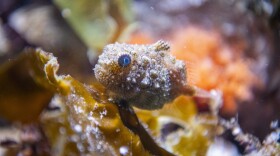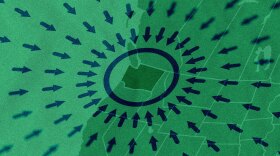Researchers at the University of Washington say they have figured out how to make lasers do something they have never done before: make a liquid colder.
When you think of a laser beam, you probably think of searing heat – a notion reinforced by https://youtu.be/djZFHTa6TfA" target="_blank">Death Stars, Bond movies and https://youtu.be/rthHSISkM7A" target="_blank">at least one Val Kilmer flick.
But the University of Washington’s Peter Pauzauskie, an assistant professor of materials science and engineering, has taken that laser and turned it into a micro-refrigerator. He says the technology could someday have broad applications, from spot-cooling tiny computer components to chilling, with literal laser precision, individual parts of living cells.
The latter possibility interests scientists, because the cooling could slow down metabolic processes and allow them to be studied in detail.
“This could open up new ways of locally refrigerating a cell while it’s dividing or repairing itself. And we could, in principle, record slow-motion video of these processes,” Pauzauskie said.
Pauzauskie’s team achieved the effect by suspending a tiny crystal in water, and then shooting it with an infrared laser. That causes the crystal to glow at a wavelength that slurps up heat from the water right around it, converting it into light and creating a very small cold spot.
Pauzauskie says his team cooled its target by 36 degrees –far more than previous experiments, and the first time it has worked on a liquid.
The findings are out in the Proceedings of the National Academy of Science.







